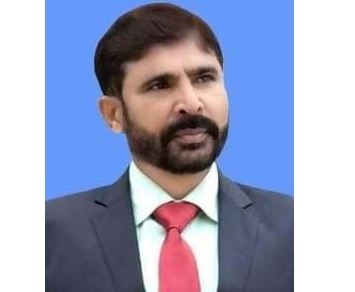Dr. Muhammad Akram Zaheer
Recent events in Syria have triggered significant political transformations, notably the dismantling of statues of former President Hafez Assad in major cities—a symbolic act reminiscent of Baghdad’s 2003 upheaval post-Saddam Hussein’s ouster. The jubilant public reaction followed the sudden removal of President Bashar Assad after 24 years of rule. Despite these developments, Syria’s trajectory toward peace remains precarious. The militant group Hayat Tahrir al-Sham (HTS), led by the contentious Abu Mohammed al-Golani, faces challenges to its legitimacy due to its jihadist roots. While the majority of Syrians practice Islam, tolerance for religious extremism is limited. Syria’s ethnic and religious diversity further complicates national consensus-building, while regional powers are poised to exploit the emerging power vacuum.The Assad regime epitomized authoritarian governance characterized by systemic repression. Hafez Assad seized power through a military coup in November 1970, displacing Salah Jadid. His rule was sustained through an extensive propaganda apparatus that presented him as Syria’s eternal leader, symbolized by statues erected nationwide. Despite deteriorating economic conditions, his government combined brutal suppression with limited welfare policies. By 1980, Syria’s per capita income was $1,470, but it dropped to $990 by 1990, reflecting economic stagnation. Corruption became deeply entrenched, functioning as a political patronage mechanism.Upon Hafez Assad’s death in 2000, his son Bashar Assad assumed power at age 34, circumventing Syria’s constitutional age requirement of 40 for the presidency. The regime’s downfall appeared inevitable due to its entrenched corruption, inability to adapt to shifting political dynamics, and failure to provide essential services. By 2011, per capita income stood at $1,500 but fell to $745 by 2021 due to the prolonged civil war. Russian military intervention and Iranian-backed militias were pivotal in preventing the regime’s collapse in 2015.
The insurgency that eventually ousted Assad was led by HTS, classified as a terrorist organization by multiple Western nations. HTS’s leader, Abu Mohammed al-Golani, has a history of militant activities, having fought U.S. forces in Iraq after the 2003 invasion. His trajectory involved affiliations with al-Qaida, the Islamic State, and Salafist groups like Jund al-Sham. Following Syria’s 2011 uprising, he founded the al-Nusra Front, a transnational jihadist entity active in Syria, Iraq, Jordan, and Lebanon.After Assad’s forces recaptured Aleppo in 2016, al-Golani rebranded his organization as HTS, focusing on Syria’s internal conflict. He established the Syrian Salvation Government in Idlib, claiming to have abandoned transnational jihadist ambitions. However, his consolidation of power involved marginalizing both religious and secular opposition factions, reinforcing authoritarian control in HTS-administered territories.
Syria’s socio-political fragmentation, rooted in its post-independence history, re-emerged following Assad’s removal. Since gaining independence in 1943, Syria has served as a geopolitical battleground for regional and global powers. Hafez Assad’s strategic maneuvering elevated Syria’s regional influence, though Bashar’s alliance with Iran after the 2003 U.S. invasion deepened Syria’s dependency on Tehran.The Syrian military, weakened by years of conflict, disintegrated rapidly as the rebellion gained momentum. Rebel forces captured key cities, including Aleppo, Hama, and Homs, facing minimal resistance. Druze communities in Sweida and rebel factions in Daraa launched simultaneous uprisings, seizing strategic territories near Israel and Jordan. However, these groups operated under distinct command structures, underscoring Syria’s fragmented opposition landscape.Syria’s destabilization has elicited swift regional responses. Israel seized strategic positions on Mount Hermon and conducted airstrikes on military installations near Damascus. Turkey intensified military operations against Kurdish factions in northern Syria. Jordan, sharing a 320-kilometer border with Syria, remains on high alert, fearing conflict spillover and renewed drug trafficking linked to Captagon production in southern Syria.
Neighboring states may exploit Syria’s instability for territorial gains. Israeli Prime Minister Benjamin Netanyahu declared the 1974 ceasefire agreement obsolete, signaling potential annexations. Similarly, Jordan’s Hashemite rulers could pursue territorial expansion into southern Syria, driven by historical claims and strategic calculations.Assad’s fall could inspire unrest across the Arab world. In Lebanon, rival factions may challenge Hezbollah’s dominance, potentially reigniting sectarian conflict. In Iraq, anti-government protests suppressed by Iranian-backed militias in 2019 could resurface amid hopes of regime change. Egyptian President Abdel Fattah el-Sissi also faces potential challenges, given parallels between Assad’s downfall and Egypt’s history of political upheavals.
Syria’s future remains uncertain amid political fragmentation and competing foreign interests. The country’s complex societal divisions and unresolved historical grievances pose significant obstacles to establishing a unified national framework. As regional powers maneuver for strategic advantage, the prospects for long-term peace and stability in Syria remain uncertain. The evolving situation is likely to reshape the Middle East’s geopolitical landscape, with ramifications extending far beyond Syria’s borders.

















